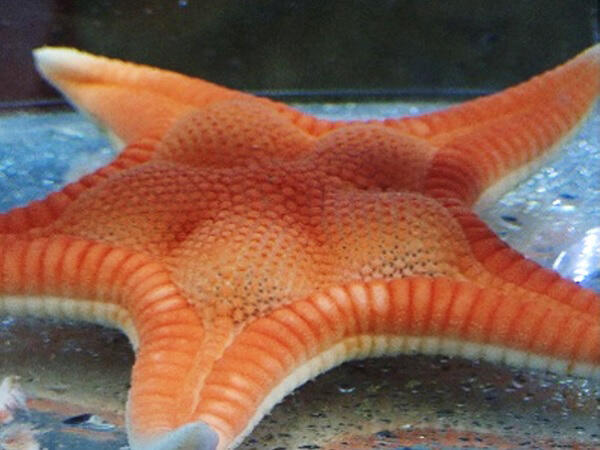A joint research group of the Misaki Marine Biological Station of the University of Tokyo School of Science, the Enoshima Aquarium, the Fukushima Prefecture Marine Science Museum, and the Yamaguchi Prefectural Fisheries Research Center conducted a taxonomic study of starfish caught as bycatch by fishermen in Hokkaido and Shizuoka Prefectures as well as during a beam trawl by the fisheries research vessel "Kaisei" of Yamaguchi Prefecture. They discovered a new species in the family Pseudarchasteridae. This is the first time in 51 years that a new species of this family has been discovered, except for fossil species.

Provided by the University of Tokyo
The class Asteroidea is a group of echinoderms with star-shaped bodies and is known to include about 2,000 species worldwide. The family Pseudarchasteridae was long considered to be a member of the Goniasteridae, based on their sharing a flat body fringed by the block-like marginal plates and tube feet ending with suckered discs, but recent genetic studies have shown that the two families are completely separate taxa.
The family Pseudarchasteridae is distributed in shallow-to-deep waters worldwide, with two species each from the genera Pseudarchaster and Paragonaster known from Japan. Between 2021 and 2023, a joint research group led by Academic Specialist Itaru Kobayashi and Technical Specialist Hisanori Kohtsuka of the Misaki Marine Biological Station, the University of Tokyo Graduate School of Science, along with staff from the Enoshima Aquarium, Fukushima Prefecture Marine Science Museum, and Yamaguchi Prefectural Fisheries Research Center, studied starfish of the family Pseudarchasteridae. These starfish were collected as bycatch in shrimp and crab fishery cages by fishermen in Hokkaido and Shizuoka Prefectures and with a beam trawl by the Yamaguchi Prefecture fisheries research vessel Kaisei.
As a result, a new species of the genus Paragonaster with a beautifully proportioned red body was discovered and named Paragonaster hoeimaruae (Hoei-miyabi-momiji-hitode in Japanese) after the fishing vessel Hoei-maru that collected the specimen. In addition to discovering a new species, this study reported new production regions for three species of the family Pseudarchasteridae. This is the first report from Japan of the genus Gephyreaster, which was discovered in Rausu Town, Hokkaido Prefecture. Previously, Gephyreaster had only been reported in waters from the west coast of the United States to the Bering Sea.
Gephyreaster spp. are large starfish, measuring approximately 30 cm in diameter. The fact that such a large species has been overlooked in Japan until now highlights the gaps in our understanding of marine biodiversity. There are approximately 250 species of starfish in Japan, and new species and records of species observed for the first time in Japan are being reported regularly. This study updated the family Pseudarchasteridae occurring in Japan to six species, although more may be discovered in the future. The order Paxillosida, which includes the family Pseudarchasteridae, is specialized for sandy mud environments but its adaptive evolutionary history remains largely unknown. Moving forward, further understanding of diversity and advanced research incorporating genetic information will reveal new aspects of starfish evolution.
This article has been translated by JST with permission from The Science News Ltd. (https://sci-news.co.jp/). Unauthorized reproduction of the article and photographs is prohibited.




